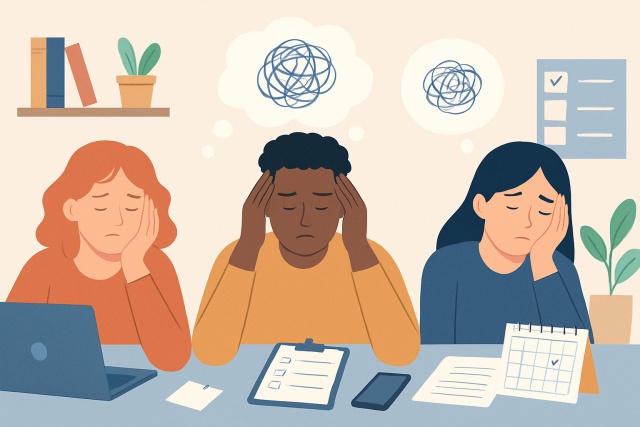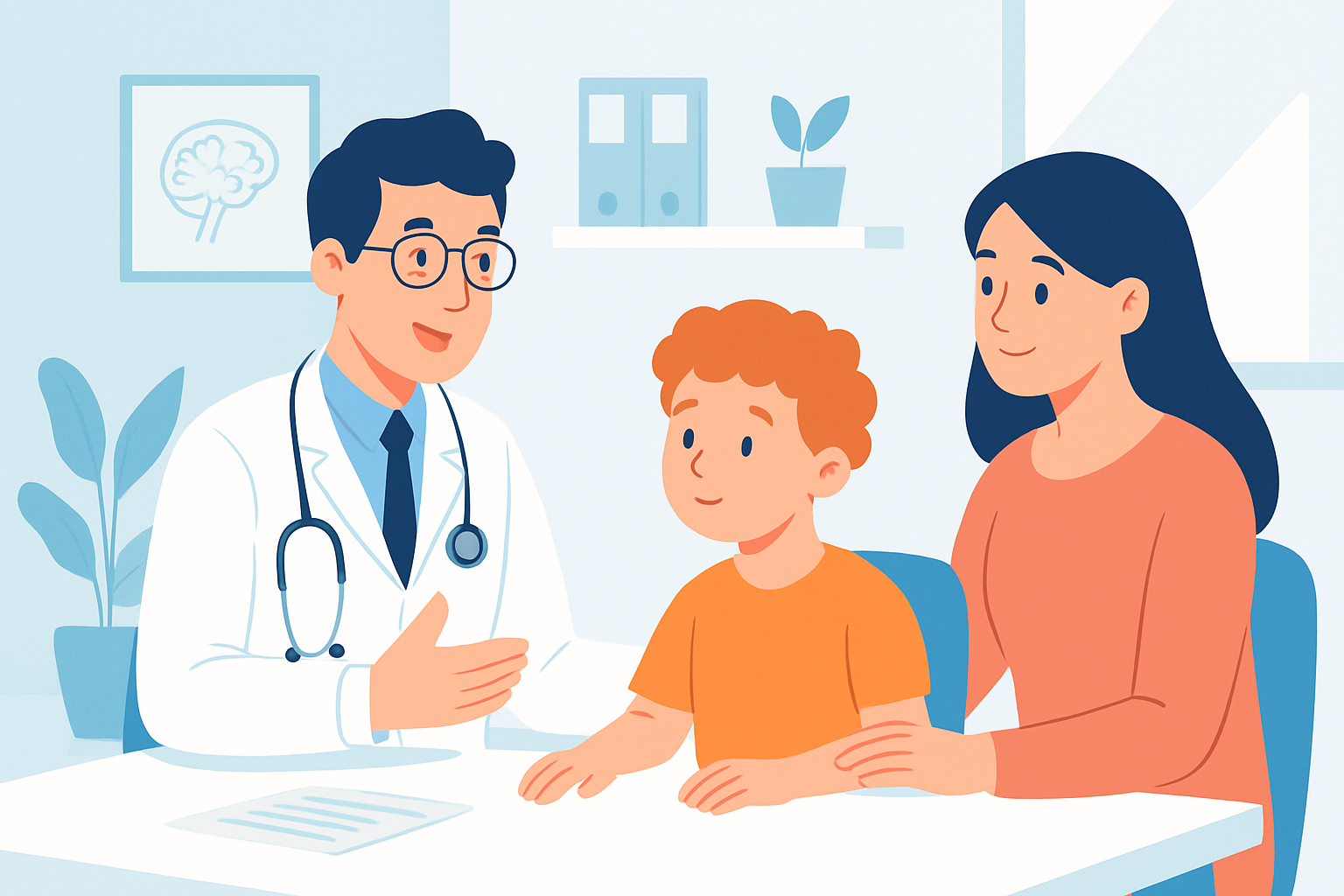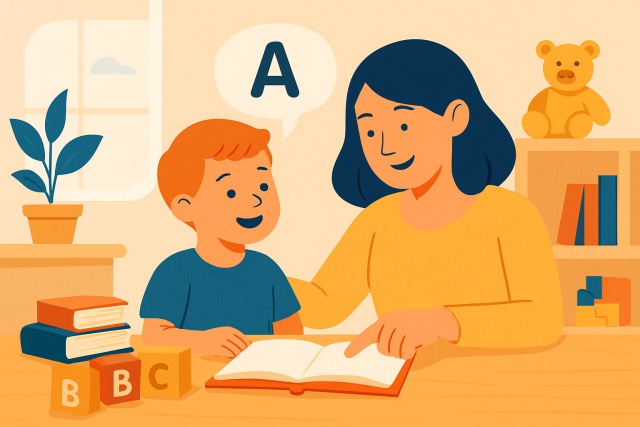Many parents wonder how to tell if their child might be dealing with ADHD. This article breaks down what ADHD actually is and highlights its key symptoms in kids. It guides you through spotting them without the usual jargon. By laying out the signs in plain terms you’ll find it easier to recognize potential issues and know just when it’s time to seek a professional’s help.
What is ADHD? A Clear and Simple Overview That Cuts Through the Noise
Attention Deficit Hyperactivity Disorder or ADHD is a common condition that changes the way kids focus and manage their impulses and activity levels. Imagine the brain as a car engine. ADHD can feel like that engine revving up or lagging behind without warning, making it tricky to stick with tasks or calm down when it is time to settle.
- ADHD is a neurodevelopmental disorder that affects attention, impulse control and activity levels—basically the brain’s way of keeping you on your toes sometimes a little too much.
- Kids with ADHD often find everyday stuff like schoolwork or following rules a real uphill climb no matter how hard they try.
- The parts of the brain involved play a big role in self-regulation and can make it tricky to stay focused or keep cool in the moment.
- ADHD is a complex condition molded by genetics and brain function, not something anyone’s choice can explain away.
Key Symptoms of ADHD in Children
ADHD symptoms generally fall into three key buckets: inattention, hyperactivity and impulsivity.
- Inattention symptoms usually show up as struggling to keep your focus and frequently overlooking little details that others might catch without breaking a sweat.
- Hyperactivity symptoms tend to look like nonstop movement and a sense of restlessness that can make sitting still feel like a real challenge.
- Impulsivity symptoms often mean jumping into action without much thought and having a tough time waiting your turn, which can definitely lead to some awkward moments.
Signs of Inattention That Might Sneak Up on You
Inattention symptoms can really throw a wrench in a child's ability to stay focused and follow directions. You might notice your child struggling to finish homework or frequently forgetting everyday tasks—not out of laziness but because genuine attention difficulties are getting in the way.
- Easily gets sidetracked by noises or movements most people would probably tune out.
- Often stumbles on schoolwork because a tiny detail slipped through the cracks.
- Struggles with following instructions when there are multiple steps; it is like juggling too many balls at once.
- Has a hard time keeping personal belongings and school supplies neat no matter how many reminders are given.
- Frequently loses track of items like toys, pencils or homework as if they have a secret life of their own.
Signs of Hyperactivity Spotting When Things Are a Bit Too Buzzy
Hyperactivity often shows up as a child who seems powered by an endless source of energy and is always on the move or fiddling with something nearby. Sitting still during meals or lessons can be a real challenge for them.
- Often can’t keep their hands or feet still and fidgets like there is a tiny storm brewing.
- Tends to chat a mile a minute and sometimes jumps into conversations before others speak.
- Finds it tricky to settle down for quiet play or focus on calm activities because their mind wanders.
- Seems restless most of the time as if their body has its own agenda to keep moving.
- Has a hard time staying put during meals or in class as if their seat is a suggestion, not a rule.
Signs of Impulsivity That Catch Your Eye (and Sometimes Surprise You)
Impulsivity often makes it tricky for children to hit the brakes and think twice before jumping in, or to patiently wait their turn without getting antsy.
- Jumping the gun by giving answers before the question is even fully out there.
- Finding it tough to patiently hang tight in line or wait for their turn like it’s just too much to ask.
- Butting into other people’s conversations or games as if they forgot the golden rule about waiting their turn to speak.
- Acting on impulse without giving a second thought to what might come next sometimes landing in hot water.
Understanding How ADHD Symptoms Stand Out from Everyday Childhood Behavior
Young children usually brim with energy and can be a bit all over the place from time to time. What really sets ADHD apart is how stubbornly these behaviors stick around and the way they start to impact everyday life.
- ADHD behaviors usually stick around and don’t just disappear overnight and often last six months or more.
- These symptoms can throw a wrench in things and make life tougher both at school and when hanging out with friends.
- You’ll often notice that these behaviors pop up more frequently or with more intensity than what you would expect from other kids the same age.
- Typically the symptoms show up in more than one place, not just at home or at school. This makes the pattern harder to miss.
Understanding these key differences can really help parents spot when behaviors have gone beyond the usual childhood quirks.
Key Signs That Often Point Toward the Need for a Professional ADHD Evaluation
Knowing when to seek professional help isn’t always a walk in the park. This section shines a light on the main red flags that could mean an ADHD assessment is worth considering.
- it can be a real head-scratcher.
- which is never easy to watch.
- for everyone involved.
- raising some understandable concerns.
- which definitely isn’t something to overlook.
- adding a bit more context to the picture.
ADHD diagnosis explained for parents
Diagnosing ADHD isn’t as simple as checking off a box from a single test. Usually, it involves a deep dive where professionals gather a handful of details about your child’s behavior across different settings.
- Evaluations are typically carried out by pediatricians or psychologists who specialize in ADHD.
- They rely on standardized rating scales and questionnaires to get a clear picture of how often and how intense the symptoms can be.
- Collecting input from parents, teachers and caregivers is key to piecing together the full story behind the behaviors.
- Symptoms should appear in more than one setting—both at home and in school—to really understand what is going on.
- The process also involves carefully ruling out other conditions that might mimic ADHD.
Common Missteps When Spotting ADHD Symptoms in Kids
There’s often a lot of confusion and stigma swirling around ADHD, mostly thanks to some persistent myths and misunderstandings. Clearing up these misconceptions usually helps parents breathe a little easier, making them feel more informed and less anxious.
- ADHD isn’t the result of bad parenting or a lack of discipline. It’s actually a neurological condition that’s beyond a caregiver’s control.
- Not every kid with ADHD is bouncing off the walls. Many mainly struggle with keeping their attention where it needs to be.
- Girls with ADHD tend to fly under the radar and show more subtle signs. Sadly, this means they often get overlooked.
- ADHD doesn’t just disappear after childhood. For many, it continues well into adulthood.
- Treatment usually involves a combination of behavioral strategies and support along with medication. It’s more like a team effort than a one-size-fits-all fix.
Spotting the early signs of ADHD can really make a world of difference, opening the door to better support and understanding. It helps kids flourish and find their footing, rather than being stuck with the heavy weight of misunderstanding or unhelpful labels.
Helpful Tips for Parents Wondering About ADHD Symptoms (Because Let’s Face It, Figuring This Stuff Out Can Be Tricky)
If you’re on the fence about whether your child’s behaviors hint at ADHD, don’t worry—there are some down-to-earth steps you can take.
- Keep a detailed journal where you jot down behaviors and concerns, how often they occur and the settings where they happen. This effort really pays off.
- Have open and honest conversations with your child’s school and teachers about any challenges you’ve noticed. Their insights can make a big difference.
- Bring your observations to your pediatrician and don’t hesitate to ask for referrals if you think it’s time to explore further.
- Consider getting a professional evaluation for a complete picture because sometimes an expert’s eye really matters.
- Dive into ADHD resources, support groups and educational materials. You’ll often find that you’re not alone on this journey.
- Make sure to highlight your child’s strengths and provide consistent positive encouragement. A little cheerleading goes a long way.





